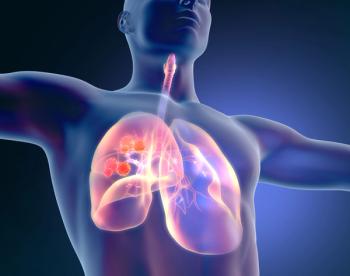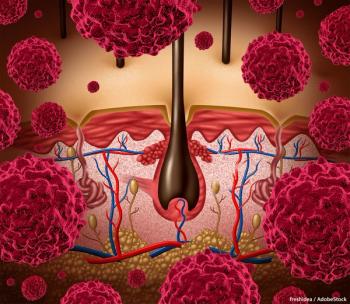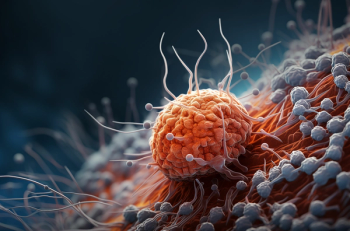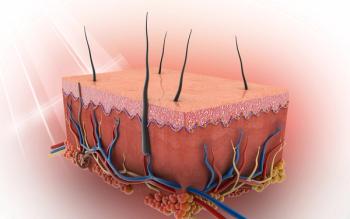
Oncology NEWS International
- Oncology NEWS International Vol 6 No 6
- Volume 6
- Issue 6
Interferon-alfa 2b Activates STAT Proteins in Melanoma Cells
CHICAGO--Although interferon-alfa 2b (Intron A) has been used for some time to treat malignant melanoma patients at high risk for relapse after surgery, little has been known about the way in which it works.
CHICAGO--Although interferon-alfa 2b (Intron A) has been used for sometime to treat malignant melanoma patients at high risk for relapse aftersurgery, little has been known about the way in which it works.
A study from Roswell Park Cancer Institute suggests a possible mechanism.The research, reported at the Society for Surgical Oncology cancer symposium,shows that interferon-alfa 2b activates STAT (signal transducer and activatorof transcription) proteins in malignant melanoma cell lines and tumor specimens.
Using a gel electrophoresis assay, the researchers found that STAT activationwas rapid in melanoma cell lines treated with interferon-alfa 2b, occurringwithin 30 seconds of administration of a radiolabeled DNA probe, said RoswellPark surgeon William Carson, MD.
Pretreatment with genistein, a tyrosine kinase inhibitor, completelyblocked interferon's DNA-binding activity, he added, showing that tyrosinekinase activity is needed for signaling to occur.
Previously frozen melanoma specimens responded to interferon-alfa 2bwith a gel shift on electrophoresis, signaling activation of STAT proteins.Fresh specimens also responded to interferon by generating DNA-bindingactivity.
Interferon-alfa 2b concentrations as low as 102 U/mL activated STAT1 and STAT 2 proteins. A signaling maximum was achieved with a concentrationof 105 U/mL, revealing a distinct dose- response curve for activation ofthese specific STAT proteins.
Pretreatment with interferon-gamma for 18 hours decreased by more than1,000-fold the amount of interferon-alfa 2b needed to activate STAT proteins.The researchers believe interferon-gamma is able to enhance the subsequentresponse to interferon-alfa 2b by acting on the STAT chaperon molecule.
"Interferon-gamma pretreatment has been used with other cytokineswithout much rationale," he said. "The way it is probably workingin this system is by up-regulating levels of the protein chaperon moleculethat carries STAT proteins into the nucleus. There is a gene transcriptionresponse to interferon-gamma, and protein levels come up within a few hours."
Articles in this issue
over 28 years ago
Studies of Counselings' Impact on Survival Challengedover 28 years ago
Telomerase Activity Potential Marker for Bladder Cancerover 28 years ago
Writing Genetic Testing Guidelines Complex Endeavorover 28 years ago
AACR Meeting Sees Growth Spurt in Telomerase Researchover 28 years ago
DDT Appears to Activate Human Estrogen Receptorsover 28 years ago
Studies Highlight Role of bcl-2 Gene in Programmed Cell Deathover 28 years ago
Efficacy of BCG Maintenance in Bladder Cancer Is Confirmedover 28 years ago
Surgery Seen as Adjunct to Chemo in Some Invasive Breast Cancersover 28 years ago
Traveling Exhibit of Cancer Educational ResourcesNewsletter
Stay up to date on recent advances in the multidisciplinary approach to cancer.






















































































